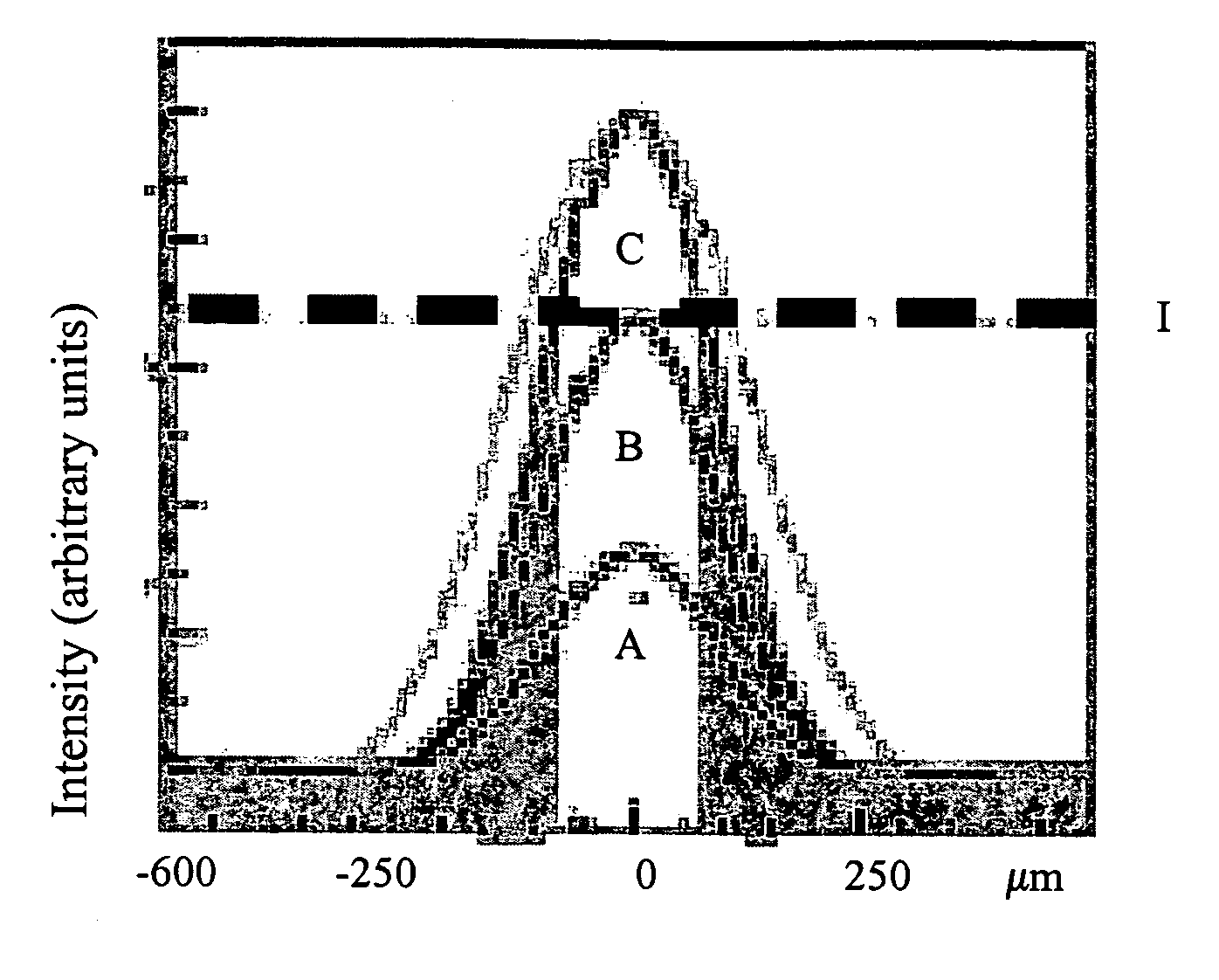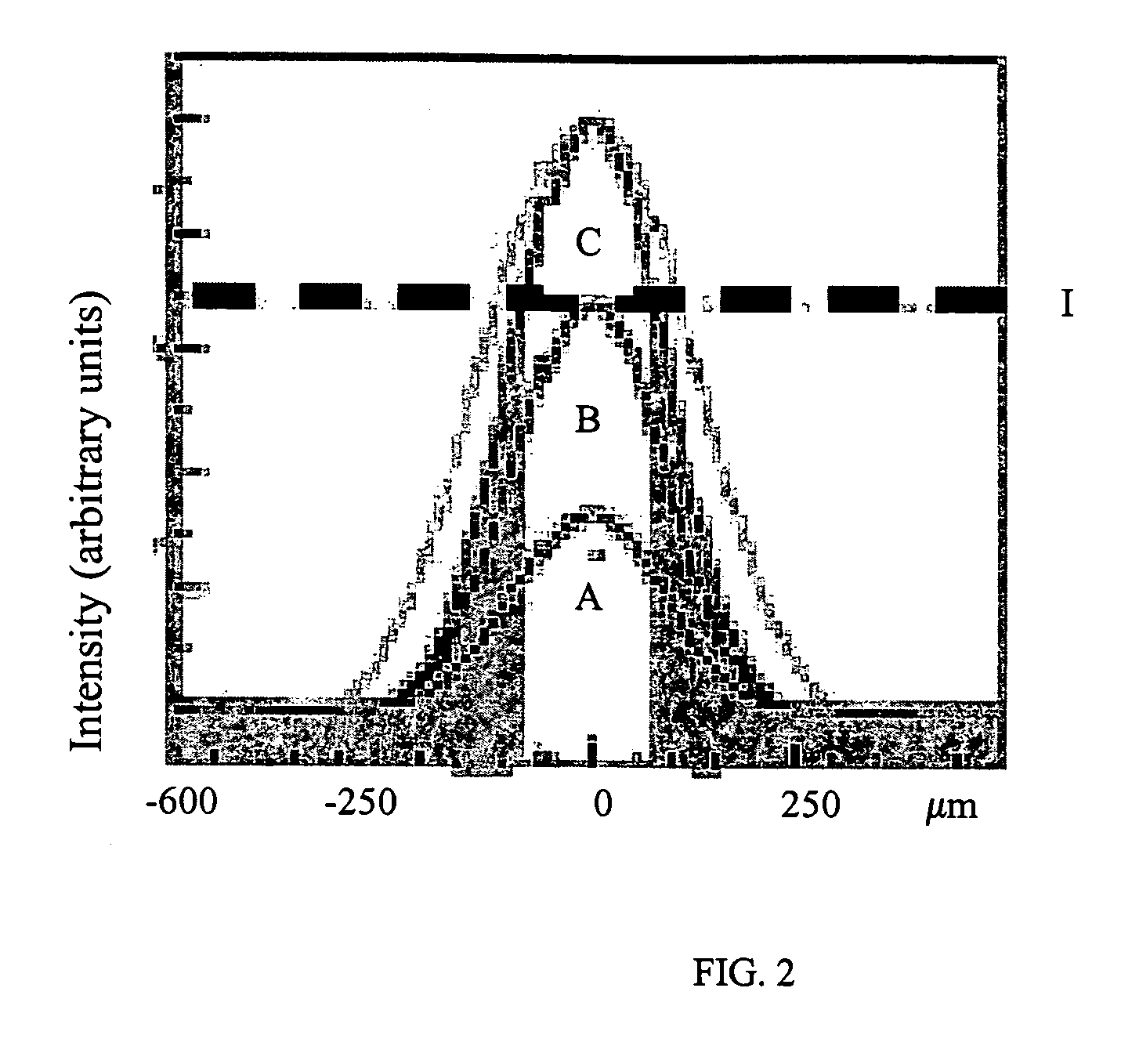Multi-photon lithography
a multi-photon, lithography technology, applied in the field of photolithography, can solve the problems of high peak-power pulses still damaging materials and/or structures placed in optical beams, destroying optical beams, damaged or reflective masks illuminated by high peak-power pulses, etc., to achieve the effect of improving image resolution and improving feature definition in exposed photoactive materials
- Summary
- Abstract
- Description
- Claims
- Application Information
AI Technical Summary
Benefits of technology
Problems solved by technology
Method used
Image
Examples
Embodiment Construction
[0020] The system described herein is directed to patterning a photoactive material, such as photoresist, applied on, for example, a wafer with a high peak-intensity optical beam, wherein the exposure is induced by simultaneously absorbing two photons which in the illustrated example have the same photon energy. In particular, the system described herein uses an optical projection-reduction system, similar to a projection mask aligner. However, unlike a conventional system, the short duration pulses of the exciting optical beam are first stretched to form pulses of longer duration with a smaller peak energy to prevent damage to the mask. These longer pulses then illuminate a patterned mask, whereafter they are recompressed, e.g., by another grating pair, and imaged onto the photoactive medium, such as photoresist, for example by a reduction optical system.
[0021]FIGS. 1a to 1d show schematically a two-photon process in an optically absorbing material. Photons having photon energies ...
PUM
| Property | Measurement | Unit |
|---|---|---|
| sizes | aaaaa | aaaaa |
| exposure wavelength | aaaaa | aaaaa |
| exposure wavelength | aaaaa | aaaaa |
Abstract
Description
Claims
Application Information
 Login to View More
Login to View More - R&D
- Intellectual Property
- Life Sciences
- Materials
- Tech Scout
- Unparalleled Data Quality
- Higher Quality Content
- 60% Fewer Hallucinations
Browse by: Latest US Patents, China's latest patents, Technical Efficacy Thesaurus, Application Domain, Technology Topic, Popular Technical Reports.
© 2025 PatSnap. All rights reserved.Legal|Privacy policy|Modern Slavery Act Transparency Statement|Sitemap|About US| Contact US: help@patsnap.com



